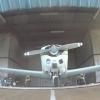-
Posts
8,724 -
Joined
-
Last visited
-
Days Won
23

Yetti replied to Wildhorsesracing's topic in Vintage Mooneys (pre-J models)
We have placed cookies on your device to help make this website better. You can adjust your cookie settings, otherwise we'll assume you're okay to continue.